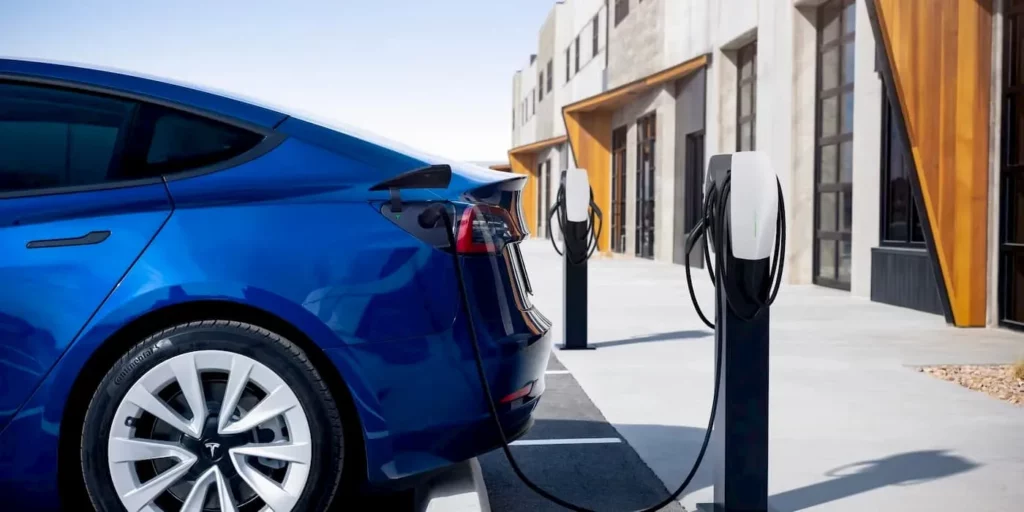According to a Deloitte study, the number of respondents who preferred an electric vehicle for their next vehicle, or their “purchase intent,” fell from 54% at the start of 2023 to 48% by October of the same year. This is true even though there were more electric vehicle introductions in India this year than hybrid vehicle launches; this trend is expected to last until 2024.
Only five hybrid vehicles (the Honda City e:HEV, the Toyota Urban Cruiser Hyryder and Innova Hycross, the Maruti Suzuki Grand Vitara, and the Invicto) and up to ten electric vehicle (EV) models were available in the mass market as of December 2023 (Tata Nexon EV, Tiago EV and Tigor EV, Mahindra XUV400, MG ZS EV and Comet EV, Citroën eC3, BYD Atto 3, Hyundai Ioniq 5, and Kia EV6).
The Mahindra XUV.e8, the Kia EV9, Tesla, the Harrier EV, the Safari EV, and the Punch EV are among the several EVs that are anticipated to be introduced in 2024 instead of any new hybrid vehicles.
“The purchase intent for electric vehicles has decreased despite this wide choice,” Rajeev Singh, a partner and Deloitte Asia Pacific‘s Consumer Industry leader, said to FE. “EV charging remains a challenge given the current infrastructure’s limits, but as more and more people drive EVs, they are becoming aware of these issues. Other significant reasons that contribute to India’s poor EV penetration include the exorbitant cost of replacing batteries, their decreased resale value, and how EVs are disposed of.

Reduced operating expenses
EV manufacturers have long maintained that their vehicles are a better investment since they have a lower total cost of ownership (TCO) than petrol or diesel vehicles. Carmakers with an EV portfolio, such as Tata Motors and MG Motor India, have conducted tests that show the running costs of an EV can be as low as Rs 1 to Rs 1.5 per kilometre, while diesel automobiles can cost up to Rs 5–6 per km and petrol cars can cost more. However, an electric vehicle’s sticker price is higher (since batteries are expensive).
For instance, the Tiago XTA (Rs 6.95 lakh) is priced Rs 3.29 lakh less than the Tata Tiago EV XT LR (Rs 10.24 lakh). However, statistics indicate that the TCO is lower and even lower if you drive it more if you use it more than 12,000 km annually for more than eight years.
Nevertheless, it seems that decreased TCO isn’t translating into more sales. Singh stated that there is a decline in the general consumer mood for EVs in India, despite the fact that 70% of respondents to the Deloitte study (ConsumerSignals) anticipate increased petrol and gasoline prices in the near future.
Electric vehicles vs hybrids
EV purchase intent decreased from 54% at the start of the year to 48% now. There is a decline in the general level of consumer support for EVs in India, despite the fact that 70% of those polled anticipate increased petrol and fuel prices in the near future. It is difficult to charge EVs with the current inadequate infrastructure;
Other significant reasons that contribute to the lower electric vehicle penetration in India are the high cost of replacing batteries, their lower resale value, and how EVs are disposed of. By 2023, hybrid vehicles will outsell EVs.
Five hybrid models (the Honda City e:HEV, the Toyota Urban Cruiser Hyryder and Innova Hycross, the Maruti Suzuki Grand Vitara and the Invicto) and a far greater number of electric vehicle (EV) models (the Tata Nexon EV, the Tiago EV, the Tigor EV, the Mahindra XUV400, the MG ZS EV and Comet, the Citroën eC3, the BYD Atto 3, Hyundai Ioniq 5, Kia EV6) are available in the mass market.
While several EVs (Kia EV9, Tesla, Mahindra XUV.e8, Tata’s Curvv EV, Harrier EV, Safari EV, and Punch EV) are on the horizon, no new hybrid vehicles are anticipated to be introduced in 2024.